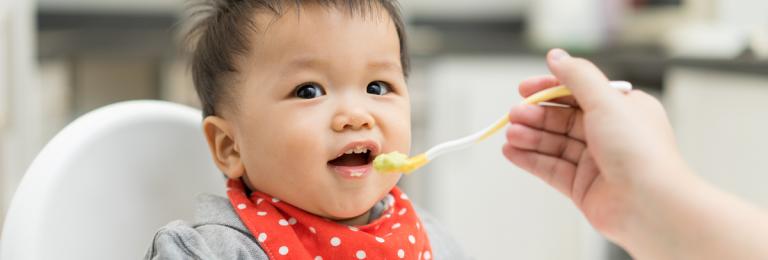DIY Baby Food
Why make it?
Around 6 months of age, babies are developmentally ready to start eating solid food. Babies need more nutrients at this age, especially iron, and are also ready for additional textures. Although there are many baby foods available at the grocery store, it’s very simple to make your own. This allows you to quickly progress from smooth to lumpier textures as some babies have a hard time accepting additional textures if they stay on pureed food for too long. Soft and finger foods can also be started at this time. Making baby food also helps introduce your baby to the flavours, herbs and spices that are commonly used at home. To save a busy parent time, , just modify the family foods you’re making by removing their portion before adding salt, hot spices and to make texture modifications. This helps children to learn to eat what their caregivers eat. Always sit with children at meals, for safety, and also for company and role modeling.
Here are some ideas:
- Protein foods are especially important to start with as they are a good source of iron that 6 month olds need. Cooked or canned and mashed legumes (e.g. hummus, lentil dahl), soft tofu, flaked fish, ground meats (e.g. Bolognese sauce) or mashed, hard-boiled eggs are all appropriate for infants. Add a little water or human milk when serving and use moist cooking methods like poaching and stewing. Quickly progress from pureed and smooth-mashed foods to minced, lumpy-mashed or grated and finger foods.
- Avocado. A great food to moisten other foods and a source of healthy fat! Cut into small cubes as a finger food, mash up with protein foods and progress to spreading on a small piece of toast or mashed with lime for guacamole (grownups might want to add cilantro or garlic and a pinch of salt, not to mention some tacos!).
- Cooked veggies. It’s great to start infants with vegetables alongside fruits so they can develop a love of veggies for a lifetime! Mash soft-cooked vegetables with a bit of water or human milk. Pureed or mashed sweet potatoes or squash with cinnamon can also be used in a curry or tagine for the family. Try lightly cooked green peas or spinach mashed with mint and a splash of olive oil. Make a pureed broccoli or cauliflower soup and thicken with cooked potato or rice or iron-fortified infant cereal.
- Freeze leftovers in ice cube trays then pop out and store in a sealed bag or container. Babies may only eat small portions to start. Thaw them in the refrigerator or microwave, not at room temperature.
For more information
Check out our resource on how to know when baby is ready to eat and other safety considerations:
HealthLink BC also has more information on starting to feed babies.
